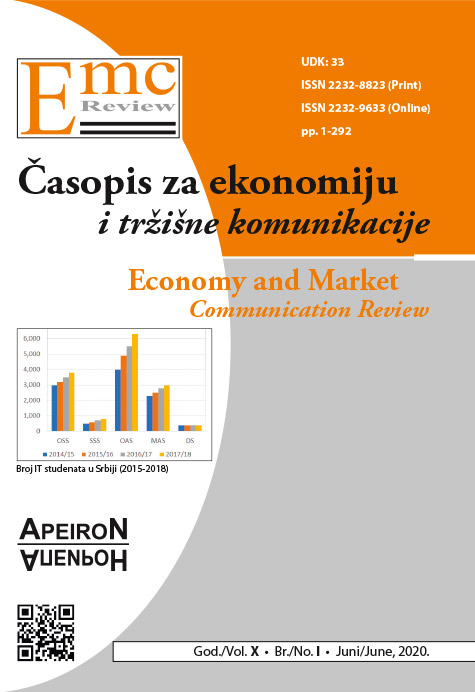Physical Activity as an Asset of Quality of Life / Fizička aktivnost u funkciji kvaliteta života
DOI:
https://doi.org/10.7251/EMC2001042JAbstract
Quality of life as one of the significant dimensions of life can be viewed and promoted in various ways. From the corpus of the multidisciplinary approach, in our work we have opted for physical activity as an important basis for the quality of life. Specifically, this paper aims to determine the effect of different physical activity programs - experimental models (E-fitball exercises during work breaks, E1 - aqua aerobics, and E2 - Nordic walking, applied over a period of three months - three times a week) on the transformation of the morphological status of physically inactive women in order to improve the quality of life. The research problem is related to the effects of different models of physical activity programs in modifying the morphological - body structure and improving the quality of life. We have defined the general hypothesis as follows: The implementation of physical activity programs (fitball, aqua aerobics, Nordic walking) will lead to positive transformational changes in morphological - body status, thus improving the quality of life.
The sample consisted of 84 subjects, women aged 30 to 40, leading a sedentary lifestyle. We tested the variables that characterize the morphological and physical status of the subjects. In order to accomplish the tasks of research and achieve its goal, a complex methodology was applied, which consisted of the following methods: experimental method with three experimental groups, morphological anthropometry method, bioelectric impedance method, descriptive statistics method (measures of central tendency and measures of dispersion), testing differences of arithmetic means (Student's t-criterion), one-factor variance analysis (ANOVA1), theoretical analysis - content analysis method.
A comparative experiment with different models of physical activity programs showed a significant statistical difference for all tested morphological indicators (with the exception of the body height variable). The dynamics of the t-test results in the variables for the assessment of morphological status showed a significant statistical difference (significance level p <0.05) between the initial and final treatment in all experimental groups. In the final testing, we register the difference between the groups with the arm circumference variable (in favor of experimental group E1 (aqua aerobics) and E2 (Nordic walking), the thickness of the triceps skin fold (in favor of E1 and E2) and the thickness of the supriliac skin fold (in favor of E1 and E2) By looking at the results of the percentage of body fat (FAT%) after the application of the experimental program, we register the highest fat reduction in the experimental group E1 (aqua aerobics). Applied physical activity models are a good instrument for maintaining and optimizing the morphological status of physically inactive women and improving the quality of life for women.
